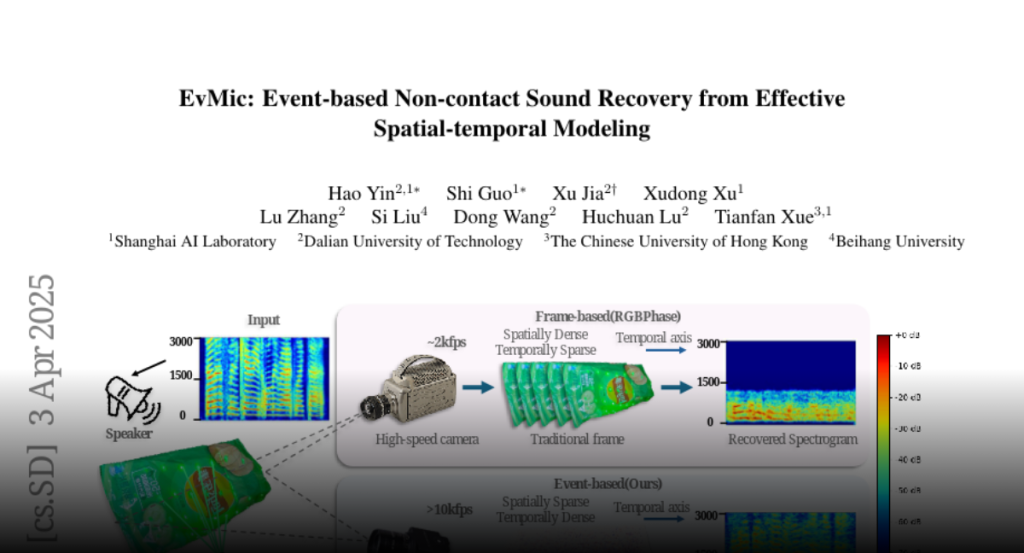When sound waves hit an object, they induce vibrations that produce
high-frequency and subtle visual changes, which can be used for recovering the
sound. Early studies always encounter trade-offs related to sampling rate,
bandwidth, field of view, and the simplicity of the optical path. Recent
advances in event camera hardware show good potential for its application in
visual sound recovery, because of its superior ability in capturing
high-frequency signals. However, existing event-based vibration recovery
methods are still sub-optimal for sound recovery. In this work, we propose a
novel pipeline for non-contact sound recovery, fully utilizing spatial-temporal
information from the event stream. We first generate a large training set using
a novel simulation pipeline. Then we designed a network that leverages the
sparsity of events to capture spatial information and uses Mamba to model
long-term temporal information. Lastly, we train a spatial aggregation block to
aggregate information from different locations to further improve signal
quality. To capture event signals caused by sound waves, we also designed an
imaging system using a laser matrix to enhance the gradient and collected
multiple data sequences for testing. Experimental results on synthetic and
real-world data demonstrate the effectiveness of our method.

